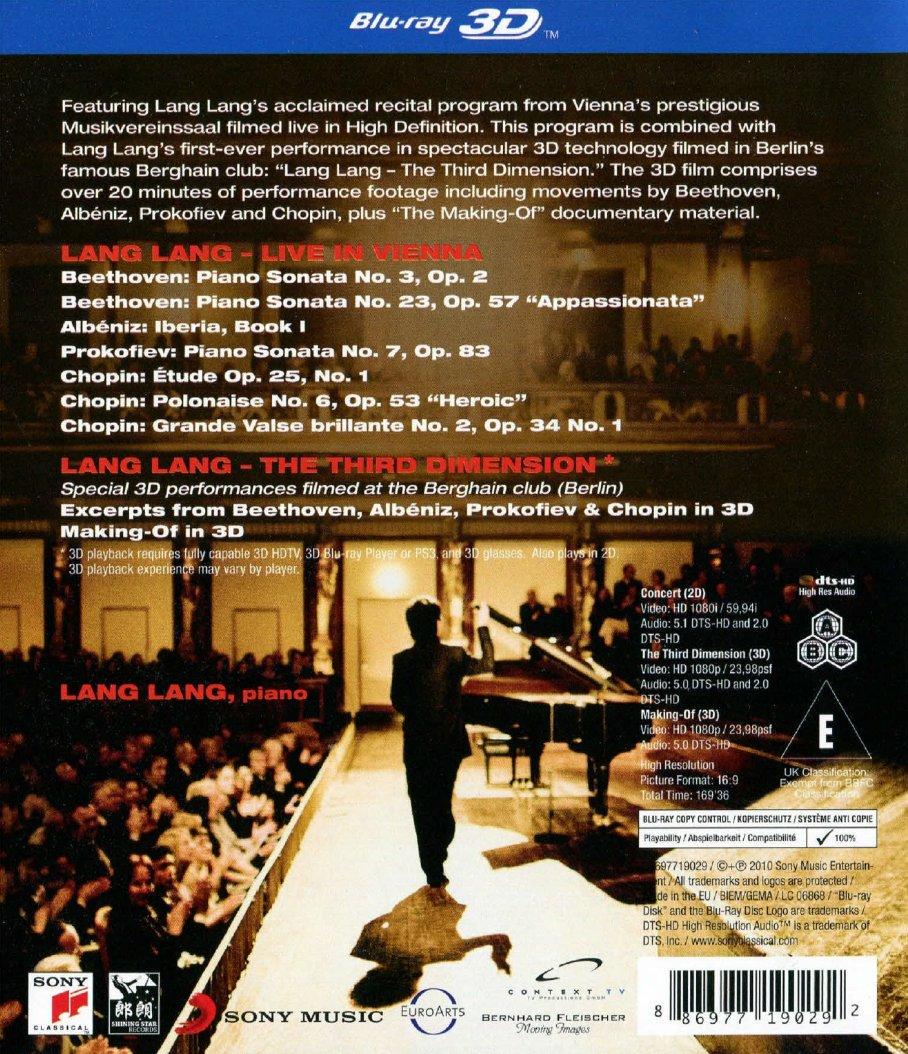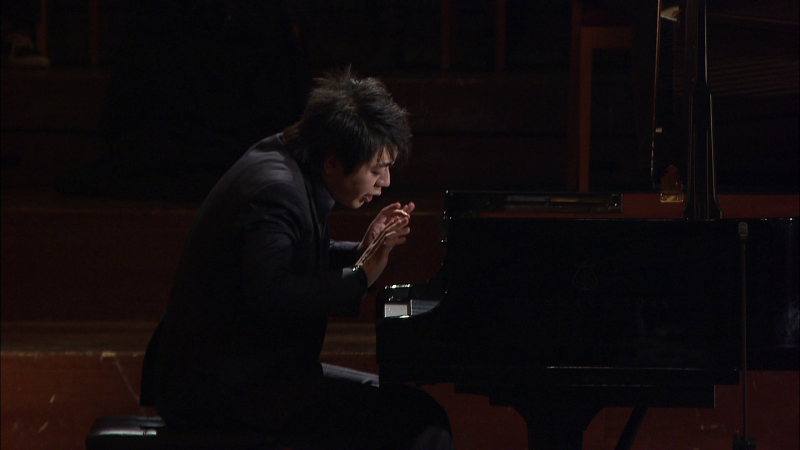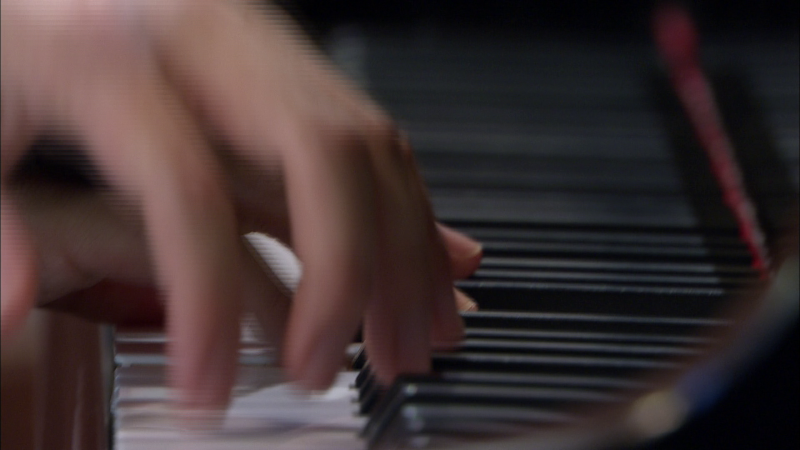

Lang Lang Live in Vienna, a piano recital by Lang Lang with the following works:
Beethoven Piano Sonata No. 3
Beethoven Piano Sonata No. 23 "Appassionata"
Albéniz Iberia, Book I "Évocation", "El Puerto", and "Fête-Dieu à Sévile"
Prokofiev Piano Sonata No. 7
Chopin Étude Op. 25 No. 1
Chopin Polonaise No. 6 "Heroic"
Chopin Grande Valse brillante No. 2
Performed 2010 at the Musikverein, Großer Saal, Wien. 40 minutes of bonus features give us our first taste of 3D in a fine-art HDVD. Main program directed by Christian Kurt Weisz; 3D program directed by Andreas Morell. The main program was recorded with 48kHz sound sampling; there is no information on the disc or the package as to what bit rate or word length was used. Released in 2010, disc has 5.1 dts-HD Master Audio sound. Grade: A
The Chinese imp-angel sold out the Musikverein Großer Saal (Vienna "Golden Hall"); there was no empty space anywhere including the risers around the piano. And if the most experienced concert audience in the world gives this guy a standing ovation, why shouldn't I? After seeing Lang (can you call him that?) play outrageously pimped-up standards in pop venues, I wasn't expecting too much. But his playing here of Beethoven and Chopin is dramatic and remarkably chaste coming from such a showboat. His renditions stack up well when I compare them to LPs and CDs in my closet from folks like Rubinstein and Argerich.
So how does Lang compare to Volodos, whose recent Musikverein recital was published by Sony in HDVD? Well, Volodos is more earnest for sure, and maybe experts would consider his technique more refined than that of Lang. But Lang is more fun. Volodos reminds me of thundering Zeus. Lang reminds me of Hermes, that playful God who would come to earth to show mortals how to find their way. And that's why Lang, I bet, makes 10 times more money in a year than Volodos.
Low, dramatic lighting: another hurdle for the videographer:
Getting ready for the most important milestone of his career:
Just before the first thunderbolt in the "Appassionata":
There's an aerial camera:
Other entertaining poses and faces:
Pose at the end of the main concert---3 long encores to go:
Lang Lang talks to the audience to announce the first encore:
After the second encore, the first of two standing ovations; eventually, even the little lady with gray hair stood up:
The face of triumph. A flash from a small camera give us different view:
Another example of problems with depth of field of focus. Here the camera is far away, an extreme close-up is directed, and the lighting is poor. In the first picture the left hand in out of focus:
Now the pianist reaches with the left hand over the right hand:
Forcing a focus adjustment for a fleeting moment. This was a tough night for the cameramen:
Lang was the first classical artist to have something out in 3D. The 3D pieces were shot, not in Vienna, but at a high-tech nightclub in Berlin that probably has its own substation on the electric power grid. (Could it be that there are more chicks hanging out around the Berghain than at the Großer Saal?) There is a short extra on the disc called The Third Dimension---The Making Of. In this you see huge pieces of 3D gear that look more like scientific instruments than TV cameras. When one of these mounted on a big crane swoops down for a close up of Lang, it looks like the Alien trying to gobble up Sigourney Weaver. At the time it was quite impossible to shoot 3D on normal locations like the stage at a concert hall.
If you navigate to the 3D tracks on the disc using 2D equipment, you see a normal 2D picture. Even in 2D, high-definition TV allows the brain to perceive an image with some degree of three dimensionality.
To get the 3D images, you must have a 3D player and display. The 3D images look fairly impressive. Lang recorded this in a dark studio with limited spotlights. This approach is clever because it masks the problem of reduced light caused by those gray 3D glasses.
It's fun to see this for the short duration of Lang 3D segment. But I still question whether 3D would benefit a full-length program of classical music. Is the benefit worth all the hassle of dealing with those miserable glasses and putting up with the lower light level?
This disc proves that Lang Lang is a fully-qualified serious classical pianist as well as a cross-over celebrity. And Sony has priced this disc right to reach a broad market. I would like to give this title the grade of "A+." But for lack of sound sampling at 96kHz and because no bit-rate is specified, I reduce the grade to "A." Still, consider buying it and the Volodos title for a great evening of fantastic piano HDVD.















